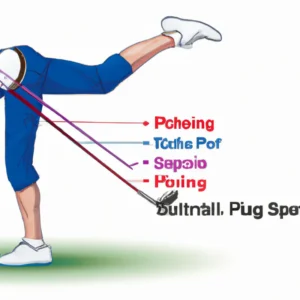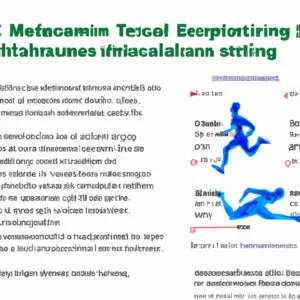Functional Training for Injury Rehabilitation: Tailoring Exercises to Support Recovery and Restore Movement Patterns
# Functional Training for Injury Rehabilitation: Tailoring Exercises to Support Recovery and Restore Movement Patterns
Injuries can significantly disrupt our daily lives and activities, often leaving us feeling frustrated and limited in our capabilities. While traditional rehabilitation methods have their place, functional training has emerged as a powerful tool in injury recovery. This approach emphasizes exercises that mimic everyday movements, allowing individuals to regain strength, flexibility, and coordination in a way that translates to real-life activities. This blog post will explore how functional training can be tailored to support recovery, restore movement patterns, and ultimately enhance overall well-being.
## Understanding Functional Training
### What is Functional Training?
Functional training focuses on exercises that improve daily life activities. Unlike isolated strength training, it incorporates movements that engage multiple muscle groups and joints, promoting a more comprehensive approach to fitness. This type of training is particularly beneficial during rehabilitation, as it helps individuals relearn and reinforce the movement patterns they may have lost due to injury.
### The Role of Functional Training in Rehabilitation
Functional training plays a crucial role in injury rehabilitation by helping individuals regain mobility, strength, and confidence. By focusing on movements that replicate daily tasks, individuals can better prepare their bodies for the demands of everyday life. This approach not only aids physical recovery but also addresses psychological aspects, as patients often feel more empowered when they can perform functional movements without pain.
## Nutrition Tips for Recovery
Nutrition is a critical component of any rehabilitation program. A well-balanced diet can enhance recovery, reduce inflammation, and support muscle repair. Here are some essential nutrition tips:
1. **Focus on Protein**: Protein is vital for muscle repair and rebuilding tissues. Include lean meats, fish, legumes, and dairy in your diet to ensure adequate protein intake.
2. **Incorporate Omega-3 Fatty Acids**: Foods rich in omega-3s, such as salmon, walnuts, and flaxseeds, can help reduce inflammation and promote healing.
3. **Stay Hydrated**: Proper hydration is crucial for overall health and aids in recovery. Aim to drink plenty of water throughout the day.
4. **Include Antioxidant-Rich Foods**: Fruits and vegetables high in antioxidants, such as berries, spinach, and kale, help combat oxidative stress and support the immune system.
5. **Limit Processed Foods**: Reducing the intake of processed and sugary foods can help minimize inflammation and support overall health.
## Exercise Advice for Rehabilitation
When incorporating functional training into an injury rehabilitation program, it’s essential to tailor exercises to the individual’s specific needs and limitations. Here are some general guidelines:
### Start Slow and Progress Gradually
Begin with low-impact exercises that focus on stability and range of motion. As confidence and strength improve, gradually increase the intensity and complexity of the movements.
### Focus on Core Stability
A strong core is fundamental for functional movement. Incorporate exercises that target core stability, such as planks, bridges, and pelvic tilts. These exercises help create a solid foundation for other movements.
### Incorporate Multi-Joint Movements
As recovery progresses, include exercises that engage multiple joints and muscle groups simultaneously. Movements like squats, lunges, and push-ups can help restore functional movement patterns.
### Listen to Your Body
Pay attention to any pain or discomfort during exercises. If something feels wrong, it’s essential to modify the exercise or consult a healthcare professional for guidance.
## Health Benefits of Functional Training
Functional training offers numerous health benefits, particularly during injury rehabilitation. Here are some key advantages:
1. **Improved Mobility**: Functional training enhances flexibility and range of motion, making it easier to perform daily activities.
2. **Increased Strength**: By focusing on compound movements, individuals can build strength that translates to improved performance in everyday tasks.
3. **Enhanced Balance and Coordination**: Functional exercises often require balance and coordination, which can reduce the risk of future injuries.
4. **Boosted Confidence**: As individuals regain strength and mobility, their confidence in their physical abilities often increases, leading to a more active lifestyle.
5. **Holistic Approach**: Functional training addresses not only physical recovery but also mental well-being, promoting a positive mindset throughout the rehabilitation process.
## Conclusion
Functional training is a crucial component of injury rehabilitation, offering a tailored approach to restore movement patterns and support recovery. By integrating sound nutrition, following exercise advice, and recognizing the myriad health benefits, individuals can enhance their rehabilitation journey and regain confidence in their physical abilities. Ultimately, functional training empowers individuals to reclaim their lives and achieve optimal health post-injury.















Post Comment